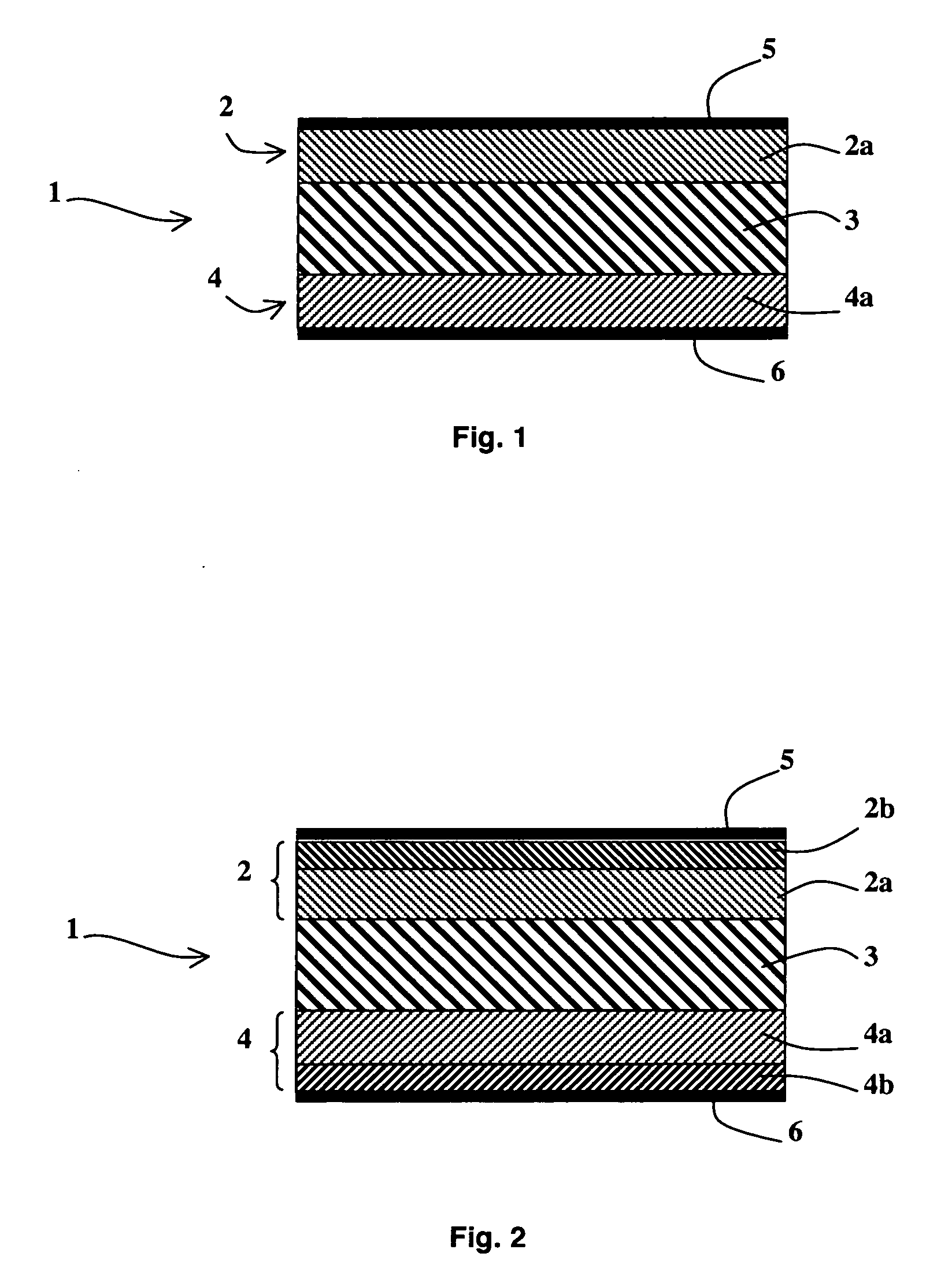Alkali fuel cell unaffected by carbonation
- Summary
- Abstract
- Description
- Claims
- Application Information
AI Technical Summary
Benefits of technology
Problems solved by technology
Method used
Image
Examples
Embodiment Construction
[0029] As represented in FIG. 1, an alkali fuel cell 1 according to the invention comprises at least one solid stack consisting of a first electrode 2, a solid membrane 3 conducting hydroxide ions and a second electrode 4, first and second current collectors 5 and 6 being respectively arranged on the first and second electrodes 2 and 4. The first and second electrodes 2 and 4 respectively comprise first and second active layers 2a and 4a in contact with the solid membrane 3 and possibly first and second diffusion layers 2b and 4b, as represented in FIG. 2.
[0030] The solid membrane 3 conducting hydroxide ions is chosen from any type of solid membrane known to be able to conduct hydroxide ions. It preferably has an ionic conductivity greater than or equal to 0.005 S / cm. For example, the solid membrane 3 can be a membrane formed by a film of tetrafluoroethylene (TFE) with a thickness of 50 μm, radiochemically grafted by chloromethylstyrene, cross-linked by divinylbenzene then amine tr...
PUM
 Login to View More
Login to View More Abstract
Description
Claims
Application Information
 Login to View More
Login to View More - R&D
- Intellectual Property
- Life Sciences
- Materials
- Tech Scout
- Unparalleled Data Quality
- Higher Quality Content
- 60% Fewer Hallucinations
Browse by: Latest US Patents, China's latest patents, Technical Efficacy Thesaurus, Application Domain, Technology Topic, Popular Technical Reports.
© 2025 PatSnap. All rights reserved.Legal|Privacy policy|Modern Slavery Act Transparency Statement|Sitemap|About US| Contact US: help@patsnap.com



